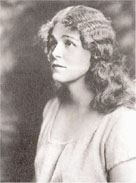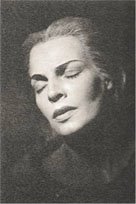Debbie Does Callas

Verdi FORZA DEL DESTINO, Met 28.II.2006 & 07.III.2006; c. Noseda; Voigt, Licitra, Delavan, Komlosi, Pons, Ramey.
Of the current run of La Forza del Destino at the Met, I've seen two so far. I came away from the first one, on February 28, severely troubled by Deborah Voigt's current vocal condition. I spent the intervening days wondering how a voice that was so celestial, so enjoyably self-assured, so butter-easy could decay into an amorphous, turbid mass of sound, troubled from bottom to top. (Why is she postponing her Brünnhildes? Who talked her into those Salomes? How shrunken is her stomach, and can her system contain enough nutrition to last her through the brutal Convent Scene? Crisis.) All that anxiety evaporated by midnight of March 7, however, when Voigt took her curtain calls amidst a thunderous ovation, after what must be the most exhilirating performance I've seen her give since the Met Frosch revivals from two seasons ago. Rough patch, slight cold, insane mild/frigid cycle in temperature, too much Olympic curling on TV, residual Forza curse-- whatever the reasons are, fans of La Voigt can now exhale and rebook those Szszszsalome flights to D.C. and Chicago (and plan on being there for the Isoldes and the Brünnhildes), for the Debbie we know and love is still in the throat of that slim Nancy Grace figure ...
Well , not exactly. There are significant changes, to be sure, but none of the career-ending kind Brewer partisans have been praying for. The voice has shed some of its 'fat' (for lack of a better word), and while there's still an abundance of richness and cream, it's considerably more supple than before. Because a minor shrillness has infiltrated that patent mass of liquid sound, a capacity for dramatic nuance (the nature of spinto) is now more than possible. (Alas, she is human, after all.) Paradoxically, the Italian repertory is no longer a means to an end for her (i.e., to maintain the intrinsic agility and freshness of her voice, she says, as she slowly descends into the hardcore German dramatic repertory), but is now a legitimate artistic field of play. By shedding her body's excesses (via gastric bypass), she has become more exposed and vulnerable, more sensitive to the romantic sensibilities of women, and is therefore more game, both vocally and theatrically, to languish in the depths of the tragedy of a scorned lady. Her "Pace, pace, mio Dio" is an authentic, heartrending essay of high Verdian elegance.
Ariadne, the Empress, Sieglinde, Elsa, Elisabeth, Chrysothemis: her successes in the German repertory, these roles are simultaneously mythic and human, and they all benefited from the extreme celestial/ethereal/extraterrestrial quality of her young voice, the same feature which made her early Aidas, Ballo Amelias and Toscas mostly stale, stiff, and unmemorable. Now, however, there is more frailness to the vocal construction (for whatever reason), and to witness her push against Verdi is an exciting thing indeed. On the flip side, we may never experience the same orgiastic thrill in the German roles; she is an artist in transition, and that's the unavoidable trade-off.
While the Forza Leonora presents a more "mature" artist in Voigt, it also highlights two things: (a) the extreme vocal challenge of this role in particular, and (b) the unfortunate fallout of diminished "weight", as far as her top notes are concerned. Leonora is both a short and a long role for the soprano: short, in that she disappears from the stage for half of the opera, and long because she does 22 minutes of the most difficult Verdian soprano music nonstop (in the Convent Scene, with Guardiano and Melitone providing only the tiniest of breathers), and then comes back onstage at 11:30pm with a formidable aria to finish it all off. The duet with Guardiano that caps the said Convent Scene ends with Leonora frantically lunging up to exposed (and fermatad) top notes repeatedly, and a superhuman kind of stamina is needed to pull them off, after many, many minutes of singing jagged lyrical lines that span the full dynamic range. Voigt fails a handful of those notes in a big way, slightly flat and with a harsh screaming crescendo (though more so in the first than in the second evening I attended), and a number of them seemed to hurt her physically, as much as they hurt my ears. However, I wouldn't worry about the future of her Isolde and Brünnhilde, at least on these grounds, for while demanding his heroines to linger up above the staff, Wagner wrote with more gentle transitions and minimal register leaps (with the exception of the Hojotohos! and a small number of other instances). Verdi is unforgiving that way. What would be exciting to hear is how she navigates the impending Salomes, which demand both lyrical agility and Wagnerian thrust. It may be the most difficult test of her career.
This weekend's broadcast will be received by Voigt fans as an assurance that she's not on the fast track to retirement; by Italian/Verdian purists as a so-so venture or a mild affront into the most holy Italian repertory by an impostor (not since Milanov ...); by German partisans, who hoped for a darkening of Voigt's timbre instead of a decisive move to spinto, as a delicate conundrum; by opera lovers as a surprisingly admirable performance. As support, Maestro Gianandrea Noseda leads a nuanced, vivid, and consistently exciting account, and the rest of the cast is surprisingly above par. Salvatore Licitra's voice may show patches of dryness and laziness (especially in Act I), but he knows how to work it when it matters most (Act III). The brilliant Met orchestra has outdone itself once again.



